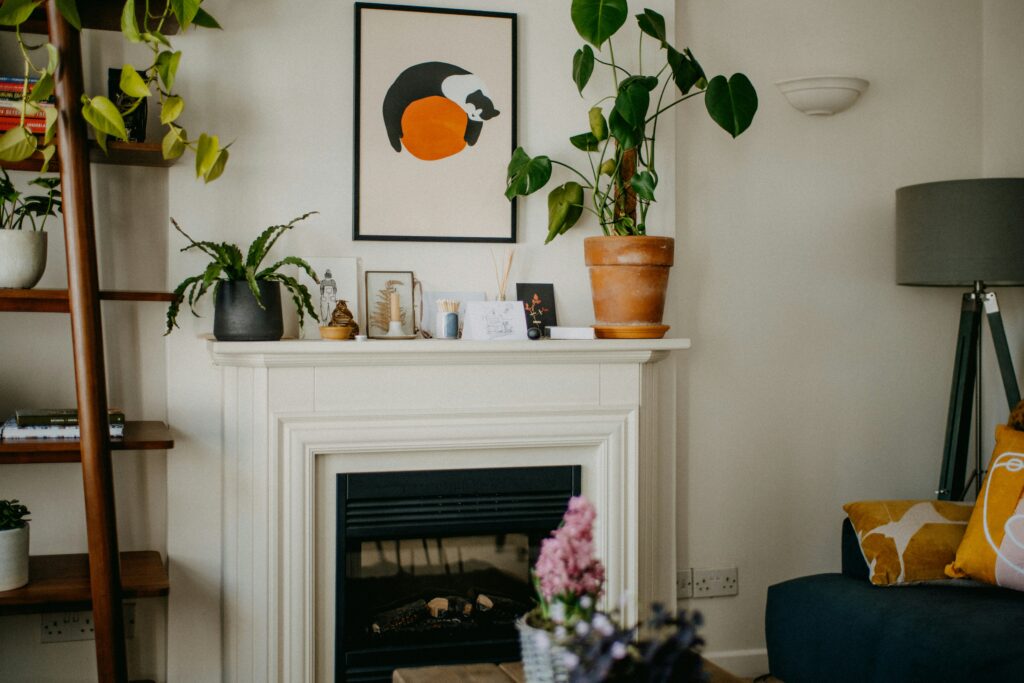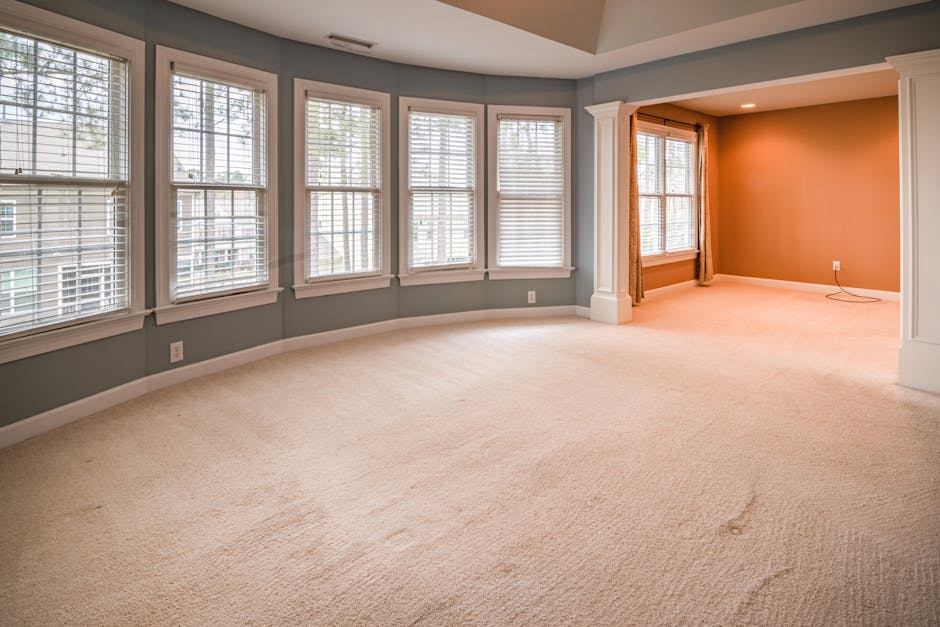First Impressions Sell Homes
Why First Impressions Matter
When it comes to selling a home, first impressions shape how buyers perceive the space—long before they consider things like square footage or appliance upgrades. A polished, well-maintained, and inviting environment can immediately elevate a home’s perceived value.
- Buyers form an opinion within seconds of stepping inside
- A tidy, visually cohesive space builds trust and suggests the home is well-cared for
- Curb appeal also plays a big role—landscaping, fresh paint, and a clean entrance go a long way
The Power of Home Staging
Professionally staged homes consistently sell faster and for higher prices than their unstaged counterparts. Staging helps potential buyers visualize themselves living in the space, which is key for emotional connection and decision-making.
- Staging highlights a home’s best features and minimizes its flaws
- Neutral decor appeals to a wider buyer pool
- Proper furniture placement can make rooms feel larger and more functional
Buyer Psychology 101
Understanding how buyers think helps sellers position their home more strategically. Most buyers aren’t just looking for a structure—they’re imagining a lifestyle.
- Buyers respond emotionally first, then rationalize with logic
- A clean, uncluttered space makes it easier for buyers to picture a future in the home
- Clutter, personal belongings, and strong design choices can distract or alienate buyers
The bottom line: selling your home is as much about psychology as it is about property. Small, intentional changes create emotional impact—and that leads to faster, more profitable sales.
Stage with Intention: Let Buyers Imagine the Possibilities
Creating a neutral, welcoming atmosphere allows potential buyers to envision a home as their own. Effective staging isn’t about impressing visitors with personal taste—it’s about helping each visitor imagine their life within the space.
Make It Easy to Picture “Home”
Buyers connect more deeply to spaces that feel open-ended and neutral. Removing personalized elements invites imagination and decreases distractions.
- Take down family photos, monogrammed items, and unique decor
- Avoid niche artwork or bold design statements
- Depersonalize without making the space feel cold
Know What to Pack Away
Not everything needs to be on display. In fact, a clutter-free environment can make rooms feel larger, cleaner, and more open.
- Pack away seasonal items, excessive furniture, and anything damaged or worn
- Remove countertop appliances and excessive decor from kitchens and bathrooms
- Leave only what enhances the space or serves a clear function
Create Clean Lines and Flowing Spaces
Arrangement matters. Thoughtful furniture placement and minimal accessories allow viewers to move easily through each room—and see its full potential.
- Keep walkways clear and open
- Align furniture with architectural features to highlight room dimensions
- Use lighting to brighten corners and emphasize depth
By simplifying and clarifying the layout, every room becomes easier to navigate—and easier to imagine as “home.”
Micro-Niching for Loyal, High-Intent Audiences
Mass appeal is fading. In 2024, it’s niche or nothing. Creators are finding more traction—and more income—by getting hyper-specific. Instead of broad categories like “lifestyle” or “fitness,” it’s now “trail running for new moms in the PNW” or “budget cooking with Polish roots.” That specificity builds trust. Viewers come for the content, stay for the community.
This shift also flips the old numbers game. It’s no longer about chasing a giant sub count. Ten thousand loyal fans who feel seen are better than a million drive-bys. These smaller, tighter audiences engage more and convert better when it’s time to sell a product, service, or brand deal.
To win in 2024, creators need to stop asking, “How many people will like this?” and start asking, “Exactly who am I talking to?” The narrower the niche, the stronger the bond. Good news: the internet has room for everyone—even if your whole thing is unboxing vintage camera gear for cats.
Traffic Flow Equals Positive Energy
Maximizing positive energy in a space isn’t just about aesthetics—it’s also about how people move through it. Clear traffic flow can dramatically improve how a room feels and functions.
Why Traffic Flow Matters
Spaces that feel cramped or confusing can create subtle stress and discomfort. Ensuring easy movement throughout your home boosts both functionality and comfort.
- Open walkways contribute to a sense of calm and order
- Poor layout can make a space feel cluttered, even when it’s clean
- Good flow enhances both form and function
Highlight Natural Focal Points
Every room has a natural focal point—maximize it.
- Arrange furniture to point toward key features like fireplaces, large windows, or scenic views
- Avoid blocking sight lines with tall furniture or unnecessary decor
- Use rugs, lighting, or wall art to draw attention without crowding the space
Edit Down to Open Up
One of the simplest ways to improve energy flow is to remove what isn’t serving the room.
- Clear out excess furniture that disrupts movement
- Eliminate decor that doesn’t align with the room’s purpose
- Leave negative space intentionally to create visual calm
Less truly is more when it comes to creating harmony at home.
Pro Tip: Walk Your Space
Physically walk through your rooms and notice how easy it is to move from one area to the next. Small adjustments, like shifting a chair or removing a side table, can make a surprising difference.
Clean sells. It’s that simple. Dusty baseboards, streaky windows, and mystery smudges on surfaces don’t scream “dream home”—they scream “extra work.” Whether you’re staging your place to vlog a tour or prepping for a buyer walkthrough, the details matter. Focus on touchpoints people notice: light switches, appliance handles, bathroom corners. Clean them like your camera is in 4K.
Then there’s smell. Nothing ruins vibe faster than lingering pet, food, or mildew odors. You want neutral—a blank slate buyers or viewers can layer their own imagination onto. Open windows, wash fabrics, change HVAC filters. If it still smells off, don’t mask it. Solve it.
Professional cleaners can knock this out efficiently, especially if time’s tight. But if budget’s a factor, strategic DIY works—just don’t cut corners. People notice. The camera definitely notices. And the algorithm? It notices what holds attention—and what turns people off after three seconds.
Making Small Spaces Feel Bigger
Designing a small room doesn’t mean sacrificing style or comfort. With the right strategies, even the most compact spaces can feel airy, functional, and inviting. Here’s how to maximize visual space without compromising aesthetics.
Use Mirrors Strategically
Mirrors aren’t just decorative—they’re powerful space enhancers. When placed correctly, they create depth, reflect natural light, and visually double your space.
- Hang a large mirror opposite a window to amplify light
- Use mirrored furniture or decor for a subtle reflective effect
- Avoid cluttering walls; one thoughtfully placed mirror is often enough
Go Minimal with Furniture
Less furniture means more room to breathe. Choose pieces that serve multiple purposes and don’t visually overwhelm the space.
- Opt for armless chairs or open-leg sofas to reduce visual bulk
- Look for furniture with built-in storage (like ottomans or coffee tables)
- Limit the number of large items to avoid a cramped feeling
Prioritize Scale and Proportion
In a small space, even one oversized item can throw off the balance. Scale furniture to fit the room, leaving ample negative space.
- Choose sleek, low-profile designs to maintain openness
- Leave space between walls and furniture to ease visual congestion
- Avoid heavy or overly ornate styles that take up more visual footprint
Keep Corners and Walkways Free
Cluttered corners and blocked paths make rooms feel smaller than they are. Clean lines and open zones create a sense of flow.
- Avoid placing furniture diagonally across corners
- Ensure walkways are clear of obstacles for easy movement
- Use vertical storage solutions to keep floors uncluttered
Lighting That Works Harder for Your Vlog
Good lighting doesn’t just flatter—it builds trust. Natural light is still your best friend. Clean the windows, pull the blinds, and shoot when daylight’s soft (early morning or late afternoon). If you’re inside most of the time, maximize that natural glow wherever it hits.
But don’t stop there. Layer your lighting setup. One overhead source won’t cut it. Add task lighting—like a desk lamp angled just right or ring lights—and ambient light to soften shadows and reduce contrast. This builds depth and keeps the vibe warm and watchable.
Speaking of warmth, stick to one tone across all your bulbs. Aim for warm white in the 2700K–3000K range. Mixed lighting (cool vs. warm) will wreck your color balance and distract viewers. Simple tweaks, big difference.
Greenery, mirrors, and fresh linens are the quiet heavy-hitters of visual storytelling in vlogs. A single, well-placed plant can soften a shot, bring life to a frame, and suggest calm without saying a word. Mirrors open up space—even in smaller apartments—while reflecting light and movement. Fresh linens, especially in bedrooms and kitchens, signal cleanliness and attention to detail.
But don’t mistake quantity for quality. This is about curated accents, not background noise. One signature print, a textured throw, or a color-pop vase can say more than twelve competing knickknacks. Make every prop earn its spot.
Create intentional “moments” in key rooms—vignette-style zones where the eye goes first. Think reading nook, coffee corner, or vanity setup. These are your frame-ready spaces. Don’t overcrowd them. Keep it clean, natural, and lived-in, not showroom sterile. The vibe you’re aiming for? Effort that looks effortless.
Stage Smart: Reuse, Rent, and Repurpose
When you’re staging on a budget, every item has to earn its spot. Fortunately, a stylish space doesn’t always require new buys. With a little creativity and strategy, you can make the most of what you already have—and fill in the rest without overspending.
Reuse and Repurpose What You Own
Before buying anything new, try to work with what you already have. You’d be surprised how much impact a few thoughtful swaps can make.
- Move furniture between rooms to highlight space and functionality
- Use bedsheets or throws creatively as couch covers or table runners
- Convert glassware or kitchen items into minimalistic décor
- Hang existing art in strategic groupings to create visual interest
Rent or Borrow Statement Pieces
For focal points or larger furniture, renting or borrowing is a cost-effective option. The goal is to impress—not invest heavily.
- Rent stylish furniture for main spaces like living rooms or master bedrooms
- Borrow items from a friend, family member, or neighbor
- Invest in just one or two statement pieces to elevate the entire space
This helps you stay on budget while still giving the home a polished, high-impact feel.
Looking for More Budget-Friendly Ideas?
For additional cost-saving strategies and inspiration, check out our full feature: How to Stage a Home on a Tight Budget.
First impressions matter—even in digital spaces. But if a viewer were pulling up to your channel like they would a house, what would they see? A clean porch or weeds choking the sidewalk?
Basic maintenance goes a long way. Start with the essentials: tidy up your channel visuals. That means trimming the fat—old, unbranded thumbnails, confusing playlists, and stale banners need to go. Think of it like mowing the lawn or tidying the porch. It’s not flashy, but it makes the space inviting.
Next, add some light curb appeal. Drop in fresh channel art that reflects your 2024 angle. Maybe it’s seasonal, maybe it’s niche-focused—but either way, it should feel current. Just like swapping out plants at your front steps, little touches keep the vibe fresh.
Don’t ignore the details. A clear about section, working links, a solid welcome video—these are your warm porch light, your new welcome mat. It’s small stuff, but it tells new visitors you care enough to show up right.
Curate an Experience, Don’t Just List
Selling isn’t about checking boxes anymore—it’s about creating moments. A listing with high-res photos and a bullet-pointed feature list doesn’t cut it if the energy falls flat. Buyers don’t just want to see a place; they want to feel it. Everything from lighting to scent to sound matters.
Think mood, not just layout. Soft playlists playing during a walk-through, fresh-cut greenery on a table, curated books on the shelves—all of it helps create an emotional anchor. The goal is simple: the buyer walks in and mentally moves in. That doesn’t require a full redesign. A few intentional changes—decluttering, rearranging a room to flow better, swapping in a statement lamp—can boost offers and shrink days on market.
If your place looks like every other listing out there, it’s forgettable. But curate an experience, and suddenly it’s the one they can’t stop thinking about.




